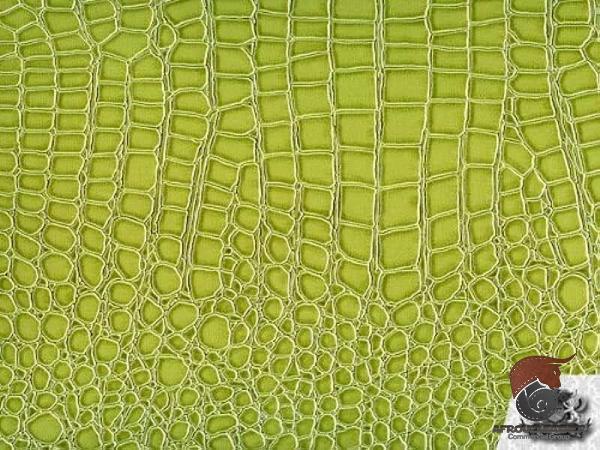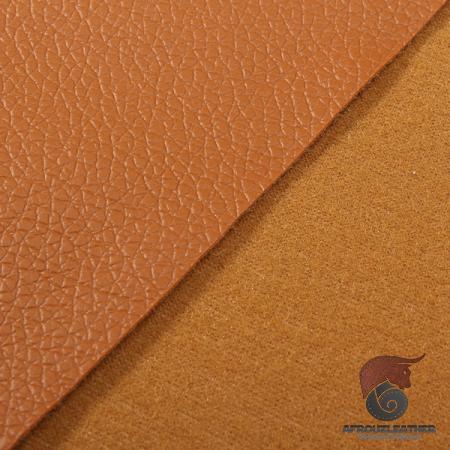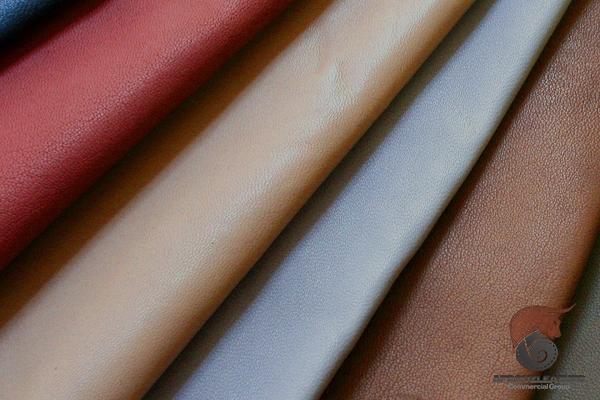Veganism has witnessed a surge in popularity in recent years, with individuals adopting plant-based diets and seeking cruelty-free alternatives in various aspects of their lives. This trend has extended into the fashion industry, where vegan leather has emerged as a sustainable alternative to traditional animal-based leather. In this article, we will explore what vegan leather is, how it is made, its environmental impact, and its growing popularity. What is Vegan Leather? Vegan leather, also known as faux or synthetic leather, is a substitute for animal-based leather that offers similar aesthetics and functionality without using animal hides. It provides an ethical and sustainable alternative for those who prioritize animal rights, environmental conservation, and a cruelty-free lifestyle. How is Vegan Leather Made? There are several manufacturing processes used to create vegan leather, each with its own unique advantages and drawbacks. The most common methods include: 1. Polyurethane (PU) Leather: Polyurethane leather is a widely used synthetic material, offering a smooth, leather-like appearance. It is typically made by bonding a polyurethane coating to a fabric backing. PU leather is durable, easy to clean, and offers a wide range of colors and textures.
leather
 However, it is not biodegradable, and its production involves the use of petroleum-derived chemicals. 2. Polyvinyl Chloride (PVC) Leather: PVC leather, often referred to as vinyl or “pleather,” is another synthetic alternative. It is made by applying a PVC coating onto a fabric backing. PVC leather is known for its affordability, water resistance, and durability. However, its production requires the use of toxic chemicals, and it is not biodegradable. 3. Mushroom Leather: Mushroom leather, also known as Mylo™, is a new and exciting vegan leather alternative made from the root structure or mycelium of mushrooms. Companies such as Bolt Threads have developed innovative techniques to grow mycelium into a leather-like material, mimicking the aesthetics and texture of animal leather. Mushroom leather is biodegradable, renewable, and has a relatively low environmental impact. 4. Piñatex: Piñatex is a natural leather alternative made from pineapple leaf fibers. Developed by Ananas Anam, Piñatex is a byproduct of the pineapple industry. It offers a visually appealing textured finish and is widely used in various fashion applications. Piñatex promotes sustainable practices, reduces waste, and supports local farming communities.
However, it is not biodegradable, and its production involves the use of petroleum-derived chemicals. 2. Polyvinyl Chloride (PVC) Leather: PVC leather, often referred to as vinyl or “pleather,” is another synthetic alternative. It is made by applying a PVC coating onto a fabric backing. PVC leather is known for its affordability, water resistance, and durability. However, its production requires the use of toxic chemicals, and it is not biodegradable. 3. Mushroom Leather: Mushroom leather, also known as Mylo™, is a new and exciting vegan leather alternative made from the root structure or mycelium of mushrooms. Companies such as Bolt Threads have developed innovative techniques to grow mycelium into a leather-like material, mimicking the aesthetics and texture of animal leather. Mushroom leather is biodegradable, renewable, and has a relatively low environmental impact. 4. Piñatex: Piñatex is a natural leather alternative made from pineapple leaf fibers. Developed by Ananas Anam, Piñatex is a byproduct of the pineapple industry. It offers a visually appealing textured finish and is widely used in various fashion applications. Piñatex promotes sustainable practices, reduces waste, and supports local farming communities.
Specifications of leather
 Environmental Impact of Vegan Leather: One of the primary motivations for choosing vegan leather is its significantly lower environmental impact compared to traditional animal leather. The process of raising and slaughtering animals for leather production leads to deforestation, greenhouse gas emissions, water pollution, and excessive resource consumption. In contrast, vegan leather production typically requires fewer resources and generates fewer greenhouse gas emissions, contributing to a reduced carbon footprint. Furthermore, vegan leather can promote sustainability through the use of renewable materials such as mushroom mycelium or pineapple leaf fibers. These materials offer biodegradability and reduce dependence on petroleum-based products. Growing Popularity and Acceptance: As society becomes more conscious of animal welfare and environmental issues, vegan leather has gained substantial popularity and acceptance. Many high-profile fashion brands and designers are incorporating vegan leather into their product lines to cater to the increasing demand for sustainable and ethical alternatives. This growing acceptance of vegan leather is evidenced by the rise of specialized cruelty-free fashion brands and the inclusion of vegan leather in major fashion events. Additionally, consumer preferences have evolved, with a significant portion of the population actively seeking vegan options in their purchasing decisions. As vegan leather continues to improve in terms of quality and affordability, its market share is expected to increase further.
Environmental Impact of Vegan Leather: One of the primary motivations for choosing vegan leather is its significantly lower environmental impact compared to traditional animal leather. The process of raising and slaughtering animals for leather production leads to deforestation, greenhouse gas emissions, water pollution, and excessive resource consumption. In contrast, vegan leather production typically requires fewer resources and generates fewer greenhouse gas emissions, contributing to a reduced carbon footprint. Furthermore, vegan leather can promote sustainability through the use of renewable materials such as mushroom mycelium or pineapple leaf fibers. These materials offer biodegradability and reduce dependence on petroleum-based products. Growing Popularity and Acceptance: As society becomes more conscious of animal welfare and environmental issues, vegan leather has gained substantial popularity and acceptance. Many high-profile fashion brands and designers are incorporating vegan leather into their product lines to cater to the increasing demand for sustainable and ethical alternatives. This growing acceptance of vegan leather is evidenced by the rise of specialized cruelty-free fashion brands and the inclusion of vegan leather in major fashion events. Additionally, consumer preferences have evolved, with a significant portion of the population actively seeking vegan options in their purchasing decisions. As vegan leather continues to improve in terms of quality and affordability, its market share is expected to increase further.
buy leather
 Challenges and Future Outlook: While vegan leather presents an appealing alternative to animal-based leather, it is not without its challenges. Some synthetic vegan leathers, such as PU and PVC, are made from petroleum-based chemicals that contribute to environmental degradation and pollution. As a result, there is a need for continued research and development into more sustainable and eco-friendly vegan leather materials. In the future, the fashion industry’s shift towards vegan leather is likely to continue. Innovations in alternative materials, such as advancements in mushroom leather or plant-based options like cactus leather, hold the promise of even more sustainable alternatives. Additionally, increased consumer education and awareness can create a greater demand for cruelty-free fashion, driving the industry to adopt more sustainable practices. Conclusion: Vegan leather offers a compelling alternative to traditional animal-based leather, addressing animal welfare concerns and promoting a more sustainable future. With various manufacturing techniques and materials available, consumers have an increasing range of choices when it comes to vegan leather products. As the fashion industry strives for greater ethical and environmental responsibility, vegan leather is poised to become a mainstream choice, replacing animal leather with a more eco-friendly and cruelty-free option.
Challenges and Future Outlook: While vegan leather presents an appealing alternative to animal-based leather, it is not without its challenges. Some synthetic vegan leathers, such as PU and PVC, are made from petroleum-based chemicals that contribute to environmental degradation and pollution. As a result, there is a need for continued research and development into more sustainable and eco-friendly vegan leather materials. In the future, the fashion industry’s shift towards vegan leather is likely to continue. Innovations in alternative materials, such as advancements in mushroom leather or plant-based options like cactus leather, hold the promise of even more sustainable alternatives. Additionally, increased consumer education and awareness can create a greater demand for cruelty-free fashion, driving the industry to adopt more sustainable practices. Conclusion: Vegan leather offers a compelling alternative to traditional animal-based leather, addressing animal welfare concerns and promoting a more sustainable future. With various manufacturing techniques and materials available, consumers have an increasing range of choices when it comes to vegan leather products. As the fashion industry strives for greater ethical and environmental responsibility, vegan leather is poised to become a mainstream choice, replacing animal leather with a more eco-friendly and cruelty-free option.

Your comment submitted.